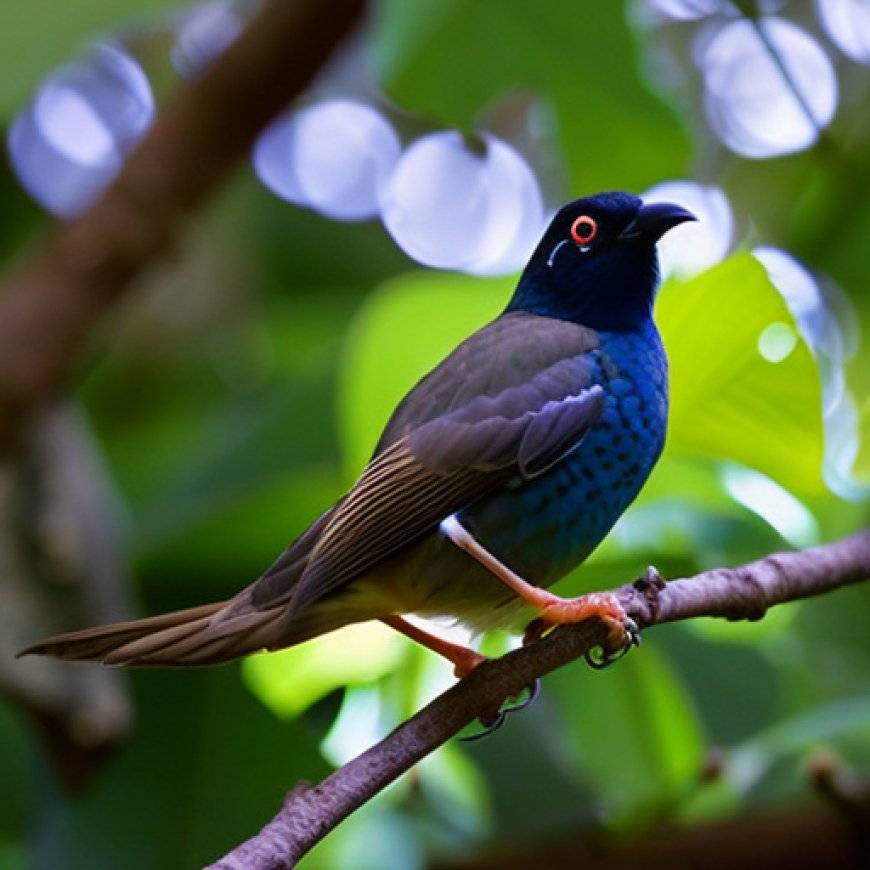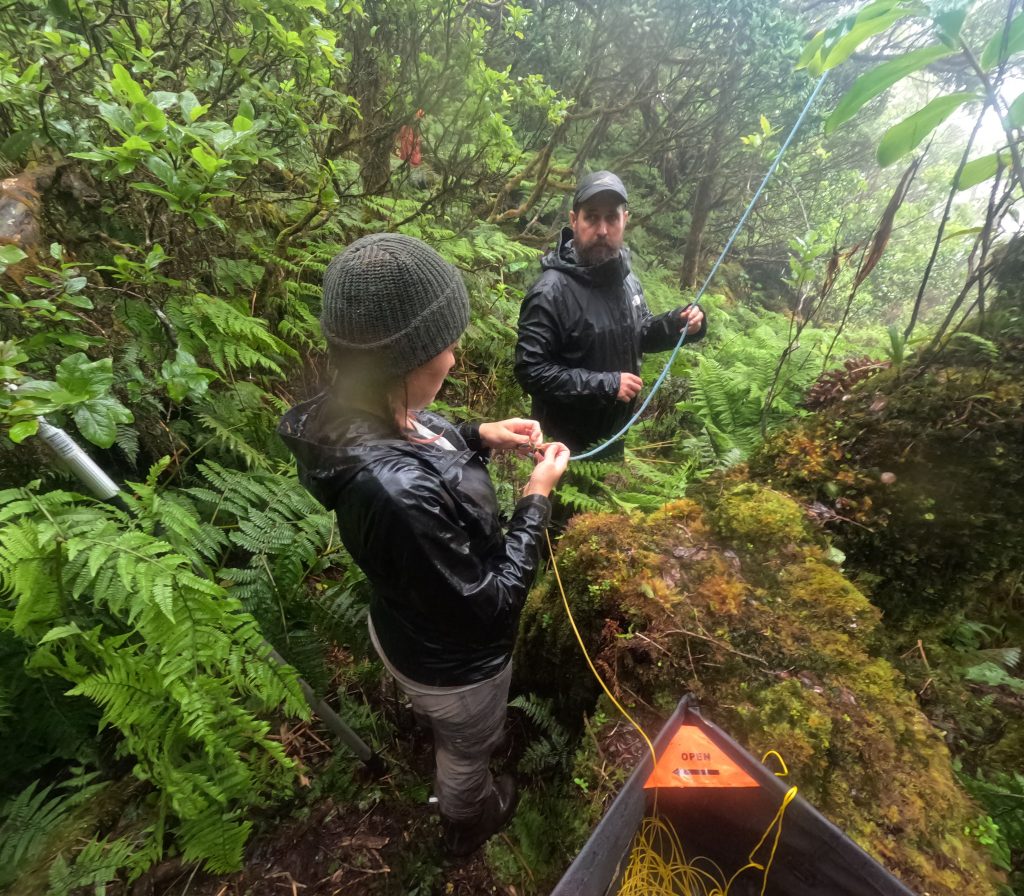8/21/24 – KAUA‘I FOREST BIRD PROTECTION AWARDED GRANTS TO RESEARCH AVIAN MALARIA IN HAWAIIAN HONEYCREEPERS


8/21/24 – KAUA‘I FOREST BIRD PROTECTION AWARDED GRANTS TO RESEARCH AVIAN MALARIA IN HAWAIIAN HONEYCREEPERS
Posted on Aug 21, 2024 in Forestry & Wildlife, Main, News Releases, slider
| JOSH GREEN, M.D. GOVERNOR |
DAWN CHANG |
FOR IMMEDIATE RELEASE
August 21, 2024
KAUA‘I FOREST BIRD PROTECTION AWARDED GRANTS TO RESEARCH AVIAN MALARIA IN HAWAIIAN HONEYCREEPERS
Click on photo to view video
The U.S. National Science Foundation (NSF) and the Paul G. Allen Family Foundation has announced a $644,758 grant to the Kaua‘i Forest Bird Recovery Project (KFBRP) to support on-the-ground efforts in its battle against avian malaria. The grant was awarded Tuesday.
A like amount of grant funding was also awarded to the University of Hawai‘i and the U.S. Geological Survey (USGS) for continued research to improve mosquito breeding to create non-viable offspring to reduce the disease transmission to Hawaiian honeycreeper forest birds.
Dr. Lisa ‘Cali’ Crampton, KFBRP Program Manager said, “We are very excited to be involved in this effort to use top-notch science to help us advance conservation of critically endangered forest bird species through reduction of mosquito-borne disease. Funding from the Partnership to Advance Conservation and Practice (PACSP) program will allow KFBRP to better monitor and refine the application and efficacy of a new tool, the Incompatible Insect Technique (IIT), to suppress mosquitoes in Hawaiian forest bird habitat.”
This research is one of 10 projects receiving funding under the PACSP program, a first-of-its-kind collaboration between the NSF and the Paul G. Allen Family Foundation. Now in its second year, the program is designed to catalyze deep collaboration between researchers advancing basic science and conservation partners engaging in on-the-ground conservation.
The projects focus on a range of species, from Hawaiian honeycreepers to grizzly bears and Venus flytraps. The outcomes will have far-reaching implications for biodiversity and conservation, policy, and the economy.
“The fundamental knowledge these projects create, even though related to specific species, will unlock innovative conservation efforts across a broader range of threatened species and ecosystems,” said Lara Littlefield, executive director for programs and partnerships at the Paul G. Allen Family Foundation. “For instance, studying whether mosquitoes infected with bacteria can limit the spread of malaria among birds in Hawaii could ultimately limit disease spread among other animals more broadly.”
Each project extends basic science into on-the-ground conservation to address critical knowledge and data gaps, enabling greater real-world impact to benefit species and ecosystems.
“The unique partnerships this program creates forge a roadmap to broader conservation action by uniting the skills, expertise and tools needed to address the most urgent threats to our natural world,” said Susan Marqusee, NSF assistant director for biological sciences. “These projects also will engage the public, policymakers, law enforcement and others in conservation through education, outreach and other broader impacts.”
David Smith, DLNR Division of Forestry and Wildlife (DOFAW) Administrator commented, “This grant builds on the strong multi-partner collaboration already in place to combat avian malaria as the single-largest threat facing native forest birds, like the honeycreepers. Every little bit helps, particularly currently, when we are facing the strong likelihood of one or more species of honeycreepers going extinct in the very near future.”
RESOURCES
(All images/video courtesy: DLNR)
HD video – ‘Akikiki egg collection, Kaua‘i (May 10-11, 2023): https://vimeo.com/1001383557
Photographs – ‘Akikiki egg collection, Kaua‘i (May 10-11, 2023): https://www.dropbox.com/sh/ub9d8rq35b1zu4z/AACSUGGUfBdknMOC_iK9ea8Aa?st=2rdp779x&dl=0
Learn more about the Partnership to Advance Conservation Science and Practice program and view the full list of awards and awardees: https://www.nsf.gov/
Media Contact:
Dan Dennison
Communications Director
808-587-0396
SDGs, Targets, and Indicators
-
SDG 15: Life on Land
- Target 15.5: Take urgent and significant action to reduce the degradation of natural habitats, halt the loss of biodiversity, and protect and prevent the extinction of threatened species.
- Indicator 15.5.1: Red List Index
-
SDG 3: Good Health and Well-being
- Target 3.3: By 2030, end the epidemics of AIDS, tuberculosis, malaria, and neglected tropical diseases and combat hepatitis, water-borne diseases, and other communicable diseases.
- Indicator 3.3.2: Malaria incidence per 1,000 population at risk
-
SDG 17: Partnerships for the Goals
- Target 17.16: Enhance the Global Partnership for Sustainable Development, complemented by multi-stakeholder partnerships that mobilize and share knowledge, expertise, technology, and financial resources.
- Indicator 17.16.1: Number of countries reporting progress in multi-stakeholder development effectiveness monitoring frameworks that support the achievement of the sustainable development goals
Table: SDGs, Targets, and Indicators
| SDGs | Targets | Indicators |
|---|---|---|
| SDG 15: Life on Land | Target 15.5: Take urgent and significant action to reduce the degradation of natural habitats, halt the loss of biodiversity, and protect and prevent the extinction of threatened species. | Indicator 15.5.1: Red List Index |
| SDG 3: Good Health and Well-being | Target 3.3: By 2030, end the epidemics of AIDS, tuberculosis, malaria, and neglected tropical diseases and combat hepatitis, water-borne diseases, and other communicable diseases. | Indicator 3.3.2: Malaria incidence per 1,000 population at risk |
| SDG 17: Partnerships for the Goals | Target 17.16: Enhance the Global Partnership for Sustainable Development, complemented by multi-stakeholder partnerships that mobilize and share knowledge, expertise, technology, and financial resources. | Indicator 17.16.1: Number of countries reporting progress in multi-stakeholder development effectiveness monitoring frameworks that support the achievement of the sustainable development goals |
Source: dlnr.hawaii.gov









